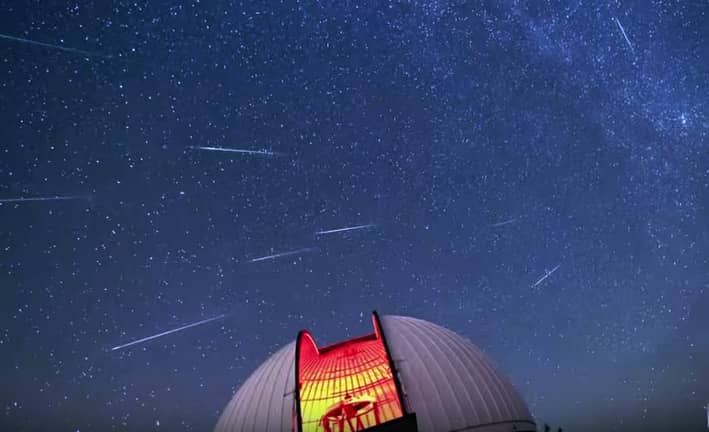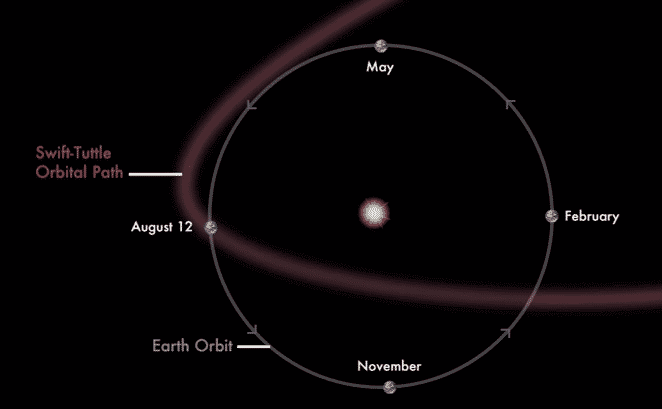

CHARLESTOWN, RI — Avid Perseid Meteor Shower stargazers worried that clouds or the moon will spoil the show need not worry with our August 2019 shooting star tips.
The smart money lies in night-owl timing late Saturday and Sunday nights, when a combination of weather and strategic use of “moon shadow” can still win a good show. You can also head to Ninigret Park in Charlestown for the darkest night sky view in RI. Allow us to explain:
Clouds Block Peek During Peak
The Perseid Meteor Shower peaks Aug. 12 – 13 in 2019, according to Timeanddate.com, during the evening Aug. 12 and early morning of Aug. 13. Unfortunately, gathering clouds Monday night will likely obscure the skies as the Earth travels through the densest concentration of the remnants of comet Switft-Tuttle this year.
Waxing Gibbous, Night Gets Bright
This year’s Perseids peak during a waxing gibbous moon, which means the longer you wait, the brighter the moon is going to get and the more likely it is to outshine any shooting stars you might see. So, while there are likely to be more meteors passing through the Earth’s atmosphere Monday night into Tuesday morning, you’re also less likely to see them even if the clouds part for a while.
Timing’s Right, Saturday & Sunday Nights
Saturday night’s forecast is clear, according to weather.com.
Sunday night’s forecast is mostly clear starting at 9 p.m., according to weather.com, and the early morning hours of Monday are forecasted as clear.
While these evenings are respectively two days and one day before the actual peak, they’re optimal viewing times this year since you’ll have clear weather, during the near-peak point of the Perseids, while the moon is a little less bright than it would be during the actual peak.
Where, When, to Watch the Perseids
Interested meteor watchers should focus their viewing between midnight and dawn, and get as far away from city and town lights as possible. Ninigret Park, home to the Frosty Drew Observatory, (the best spot in the state for stargazing with the least light pollution within the borders), is considered the best spot for stargazing.
Where to view:
- Frosty Drew Observatory 61 Park Ln, Charlestown, RI (There is no official viewing scheduled for Saturday or Sunday night.)
- Any spot far from city/town lights. The farther you get from town, the better your view will be.
Regardless of where you do your viewing, the waxing gibbous moon will show off about 86 percent of the moon’s full luminosity, according to calendar-12.com. That’s enough light to dim shooting stars, unless you follow the advice of Earthsky.org, and position yourself within a moon shadow – the shadow of a building or row of trees – that will block the moonlight from your view.
Perseid Meteor Shower Viewing Tips:
- Bring a blanket and something to prop your head up as you watch for meteors.
- Remember, state parks close at dusk, so while those areas are far from light pollution, you won’t be able to go in.
- This is a good night to let the other guy drive so you can just look up.
- If you see a very slow, bright object sailing across the sky, it’s either a satellite or a Space Station.
What are the Perseids?
- The Perseids and the spectacular meteor shower show they’re known for are created by the debris field from Comet Swift Tuttle, which the Earth passes though every August. Pieces from the comet, meteors, strike the Earth’s atmosphere at 132,000 mph, burning up and creating the fireball effect, according to NASA.gov.
- Meteorites are meteors that survive their firey encounter with the atmosphere and strike the Earth.
- The Perseids were named so because the meteors viewed appear to be approaching from the constellation Perseus.

This is a test
